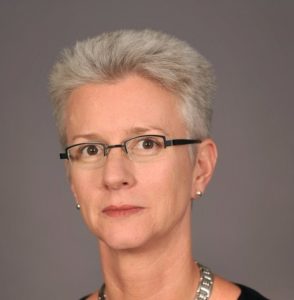Retiring Junior (and Senior)

As academics promoting semantic changes, my wish is we retire the word “junior” to describe early career investigators. Those faculty we call junior in venues like departmental meetings and text of grants are adult professionals with more than 20 years of education, specialized training, and experience. They are in long-term relationships, and have families, mortgages, and roles in the community. They were recruited to be a nidus of scholarly activity and are the source of the energy, synergy, and ideas that propel science.
Junior’s overtones of younger, subordinate, diminutive, lesser, or offspring are less than ideal. Newer hires are simply earlier on the path. Each of our research careers pivot on insight, innovation, filling gaps in knowledge, convincing others of the importance of lines of research and bringing new approaches into play in new alignments. Early career investigators can be ideally suited to breakthroughs. Career development awards, such as NIH K awards, exist as a hothouse for ideas, preliminary data, innovation, and discovery from which to grow flourishing new work.
The label junior also reinforces a mentoring model of individual apprenticeship to a senior. The imagination jumps to worst-case historical context in which apprentices were legally bound to a tradesman by indentureship to learn a trade, with little hope of becoming co-equal or a partner in the practice of that trade. The apprentice’s work, growth of skills, responsibilities, livelihood, and prospects hinged on the generosity and abilities of the master craftsman. In academic life, stories of remarkably inept or terrifying mentors most often arise in one-to-one mentoring experiences.
Much mentorship continues an apprentice-like model. An early career investigator builds on the resources of an established investigator’s lab, including equipment, financial support, and experience. Despite typically helpful intent, this can place early career faculty at risk. The drive for novelty, full differentiation of a program of research, and the complexity of modern science call for a team of mentors that cross disciplines, methods, and departments. The reality of large-scale, collaborative science requires broader access to a group of established investigators who can help early career investigators anticipate challenges, trouble shoot, vet ideas, and position their careers well.
While we’re at it, let’s retire senior in favor of “established investigators.” Early career investigators fuel growth in new areas of work. Established investigators are the scaffold that facilitates the stability of the research enterprise and serve as invaluable guides.
Our de facto definition of independence as a researcher is having robust extramural, competitive funding alongside departmental support for facilities and logistic needs. Nonetheless those described as junior may have achieved national recognition, high impact findings and a high-functioning research staff well before promotion in faculty title or in description as junior. I’ve heard an individual who received a U01 in the third year of faculty life, after two R01s, discussed as “a junior member” of the center for which the award fundamentally changed entire research domains and provided resources to expand the mission of a center.
Roles and contributions seem better differentiators. Using terms that describe where individuals are on the path and their roles (e.g. postdoctoral fellow, K-awardee, mid-career faculty, program director) is more informative and recognizes the person.
More Resources
Advice for (New) Assistant Professors
Finding Community on Twitter: Why I Plugged In






0 Comments